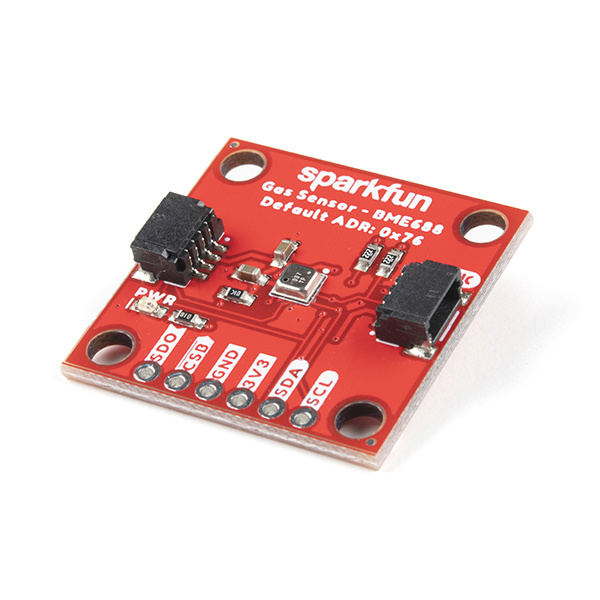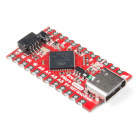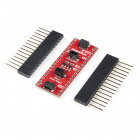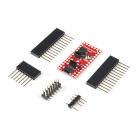SparkFun Environmental Sensor Breakout - BME68x (Qwiic) Hookup Guide
Introduction
The SparkFun Environmental Sensor - BME680 (Qwiic) is a breakout for the 4-in-1 BME680 gas sensor from Bosch. The BME680 combines a gas sensor with temperature, humidity and barometric pressure sensing for a complete environmental sensor in a single package. The gas sensor on the BME680 can detect a wide variety of volatile organic compounds (or VOC for short) to monitor indoor air quality. Combine that with precise temperature, humidity and barometric pressure and the BME680 can work as a completely standalone environmental sensor all in a 1"x1" breakout! The BME680 communicates over either I2C or SPI. As you would expect from the name, the BME680's I2C pins are broken out to a Qwiic connector so integrating it into the SparkFun Qwiic System is a breeze. Simply plug it into a Qwiic-enabled microcontroller and you're well on your way to making your own weather station.
The Qwiic BME688 breakout board is an updated version of the BME680 environmental sensor from Bosch. With the same features of the original BME680, the new BME688 also includes an additional gas scanning functionality to detect the presence of VSCs (i.e. hydrogen sulfide (H2S) compounds). The gas scanner operation can be manually customized or trained with the BME AI-Studio tool to detect target samples.
- How is the BME688 different from the BME680?
- The BME680 does not support AI features.
- Can we test the AI software it with the current BME680?
- No, this is not possible, as the BME680 does not have the necessary gas scan function.
-
While the BME688 Qwiic board can be used with the BME AI-Studio and BSEC2 Arduino library, for the AI functionality, it is recommended that users purchase the BME688 Evaluation Board (Coming Soon) for ease of use.
Required Materials
Note: To get started with the BME688, a RedBoard Qwiic is more than sufficient for the basic sensor functionality covered in this tutorial. However, the more advanced BSEC2 Arduino library, with support for the BME688 AI functionality, is only compatible with some of the ESP32 microcontrollers, like the ESP32 WROOM.
*For more details, check out the tested platforms section of the Arduino library and our Getting started with the BME AI-Studio guide (coming soon).
To follow along with this guide you will need a microcontroller to communicate with the BME68x. Below are a few options that come Qwiic-enabled out of the box:
If your chosen microcontroller is not already Qwiic-enabled, you can add that functionality with one or more of the following items:
You will also want at least one Qwiic cable to connect your sensor to your microcontroller.
Qwiic Cable - 100mm
PRT-14427Qwiic Cable - 50mm
PRT-14426Qwiic Cable - 200mm
PRT-14428Qwiic Cable - 500mm
PRT-14429Suggested Reading
If you're unfamiliar with serial terminals, jumper pads, or I2C be sure to checkout some of these foundational tutorials.
Installing an Arduino Library
Serial Peripheral Interface (SPI)
Logic Levels
I2C
Serial Terminal Basics
RedBoard Qwiic Hookup Guide
The Qwiic BME68x utilizes the Qwiic connect system. We recommend familiarizing yourself with the Logic Levels and I2C tutorials (above) before using it. Click on the banner above to learn more about our Qwiic products.














